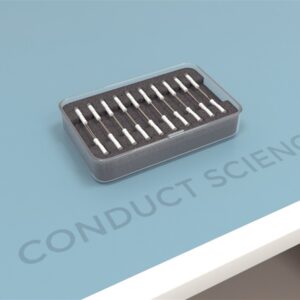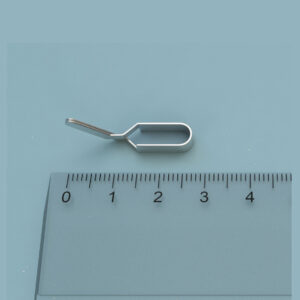$1,990.00
The Radial Arm Water Maze is made from the Morris water maze with radial arm inserts. The inserts add spatial complexity and combine the measures of the dry Radial Arm Maze with the rapid learning and aversive aspect of the Morris Water Maze. Multiple variations are possible from 4 arms to 12 arms. All inserts are made of high quality stainless steel for durable use, easy washing, and extremely stable experimental conditions in the setting of a full tank of fluid in the morris water maze. The MazeEngineers inserts are placed within the 4ft and 6 ft tanks.

MazeEngineers empowers preclinical neuroscience research with meticulously designed, customizable behavioral apparatuses. From manual classic mazes to fully automated smart systems, we provide the tools scientists need to capture high-quality, reproducible data for studies on learning, memory, anxiety, and depression.

bool(false)



In 1984, Richard G. Morris introduced the Radial Arm Water Maze (RAWM) as an innovative tool for investigating spatial memory and learning. Since its inception, the RAWM has undergone numerous adaptations and refinements tailored to diverse research needs. One notable adaptation is the introduction of the Radial Arm Inserts.
From the late 1990s onward, researchers began employing Radial Arm Inserts within the Water Maze to probe learning and memory capabilities in various contexts, including neurodegenerative disorders like Alzheimer’s, aging models, drug assessment protocols, and even predator exposure studies. By incorporating spatial complexity, these inserts seamlessly merge the dry Radial Arm Maze’s measures with the Morris Water Maze’s rapid learning and aversive components.
Typically crafted from aluminum, these inserts feature arms ranging from 4 to 12, strategically positioned within a water-filled pool to conceal escape platforms effectively. Offering a platform for both working memory and reference memory tasks, the RAWM with Radial Arm Inserts stands as a versatile tool in cognitive research.
The setup comprises a circular pool with an internal diameter ranging from approximately 0.9 to 1.2 meters and a minimum depth of 23 to 25 centimeters. Inserts, crafted from either metal or plastic, maintain uniform dimensions. Typically, these inserts stand between 20 to 30 centimeters tall, with lengths spanning 60 to 75 centimeters.
Arranged to ensure equal spacing, the arms of the inserts create passages with precise geometry. In a 6-arm configuration, for instance, the angle of separation measures 60 degrees. The central zone occupies an area of about 36 to 40 centimeters in diameter. Passage widths fall within the range of 20 to 25 centimeters, while the escape platforms boast a diameter of 10 centimeters.
The water level in the pool is carefully maintained approximately 10 centimeters below the rim. Inserts are positioned within the pool to ensure that the water level remains 6 centimeters below the height of the arms, preventing subjects from attempting to climb over them. Escape platforms are strategically placed within the arms, with the hidden platform barely submerged under approximately 0.5 centimeters of water, while the visible platform remains uncovered.
Subjects are either situated in an arm of the RAWM devoid of the escape platform, facing the central area, or positioned directly within the central zone. Each session lasts a minimum of 1 minute. Should a subject fail to reach the escape platform within the allocated time, gentle guidance is provided to direct it toward the platform. Following completion of the trial, subjects are allowed a brief 10 to 15 seconds of respite on the escape platform before being dried with a towel and returned to their housing under a heat source. Tasks are conducted over a span of at least 2 days, comprising a total of 15 trials distributed across 3-hour intervals.
The experimental environment is well-illuminated, and water temperature remains consistent throughout testing. Additionally, diligent efforts are made to ensure the cleanliness of the water, removing any debris left behind by subjects. Each arm is clearly labeled for easy identification. While manual tracking and recording are feasible, the use of tracking and video software, such as Noldus Ethovision XT, may facilitate scoring and analysis.
In the evaluation of the chronic administration of quinolinic acid on spatial learning, a RAWM equipped with retractable platforms is employed. Surgically treated subjects initially occupy the central platform beneath a Plexiglas cylinder for a brief 10-second period. Upon raising the cylinder, the central platform descends, compelling subjects to locate the escape platforms positioned beneath each arm. Upon discovery, subjects enjoy a 10-second respite before the escape platform is retracted for the duration of the trial. Subjects are free to explore until all platforms are found or until 3 minutes have elapsed. Testing spans 21 days, with subjects undergoing four trials per day.
To investigate the impact of predator exposure on spatial working memory, a 6-arm RAWM is utilized. The location of the escape platform remains constant within a given day but varies across test days. Subjects undergo an acquisition trial to learn the platform’s location before a 30-minute delay period, during which they are placed in either a safe or unsafe environment (near predators, such as cats). Subsequently, subjects engage in a retention trial within the maze.
In exploring the effect of age on spatial learning and memory, rats of two age groups (young: 6 months; old: 21 months) partake in RAWM tasks. Placed in one of the seven start arms facing the wall, each subject has 120 seconds to locate the escape platform. Upon discovery, subjects rest on the platform for 15 seconds. Platform position remains consistent for the first three days before changing on the fourth day. Testing occurs over four days, with five trials conducted daily and a 30-minute inter-trial interval.
The RAWM amalgamates the advantageous features of both the Radial Arm Maze and Morris Water Maze paradigms. Throughout each trial on the RAWM, researchers can monitor and document the following parameters:
The graphs above allow for easy visualization of observable factors and comparisons. The graph below shows sample data of errors made by subjects when given a retention test after exposure to a predator (Diamond et al., 1999).
Strengths
The Radial Arm Water Maze synthesizes the strengths of both the dry Radial Arm Maze and the Morris Water Maze paradigms. The presence of water introduces an aversive component, motivating subjects to explore the maze in search of an escape platform. Incorporating radial arm inserts adds spatial complexity to the rapid learning water task. By amalgamating measures from the RAM task, the RAWM streamlines data collection. Moreover, the RAWM obviates the necessity for food deprivation or footshock, common in alternative tasks. Its adaptability renders it suitable for diverse investigations concerning spatial learning and memory.
Limitations
As with any behavioral task, the subject’s individual behavioral responses and mental stability significantly influence outcomes. The subject’s swimming ability can also impact results. It is crucial to prevent subjects from being overburdened and to maintain appropriate inter-trial intervals to ensure reliable results.
Alamed J, Wilcock DM, Diamond DM, Gordon MN, Morgan D. Two-day radial-arm water maze learning and memory task; robust resolution of amyloid-related memory deficits in transgenic mice. Nat Protoc. 2006;1(4):1671-9.
Shear DA, Dong J, Haik-Creguer KL, Bazzett TJ, Albin RL, Dunbar GL. Chronic administration of quinolinic acid in the rat striatum causes spatial learning deficits in a radial arm water maze task. Exp Neurol. 1998 Apr;150(2):305-11.
Diamond DM, Park CR, Heman KL, Rose GM. Exposing rats to a predator impairs spatial working memory in the radial arm water maze. Hippocampus. 1999;9(5):542-52.
Shukitt-Hale B, McEwen JJ, Szprengiel A, Joseph JA. Effect of age on the radial arm water maze-a test of spatial learning and memory. Neurobiol Aging. 2004 Feb;25(2):223-9.
| Species | Mouse, Rat |
|---|---|
| arm-insert | 6 Arms |
There are no questions yet. Be the first to ask a question about this product.